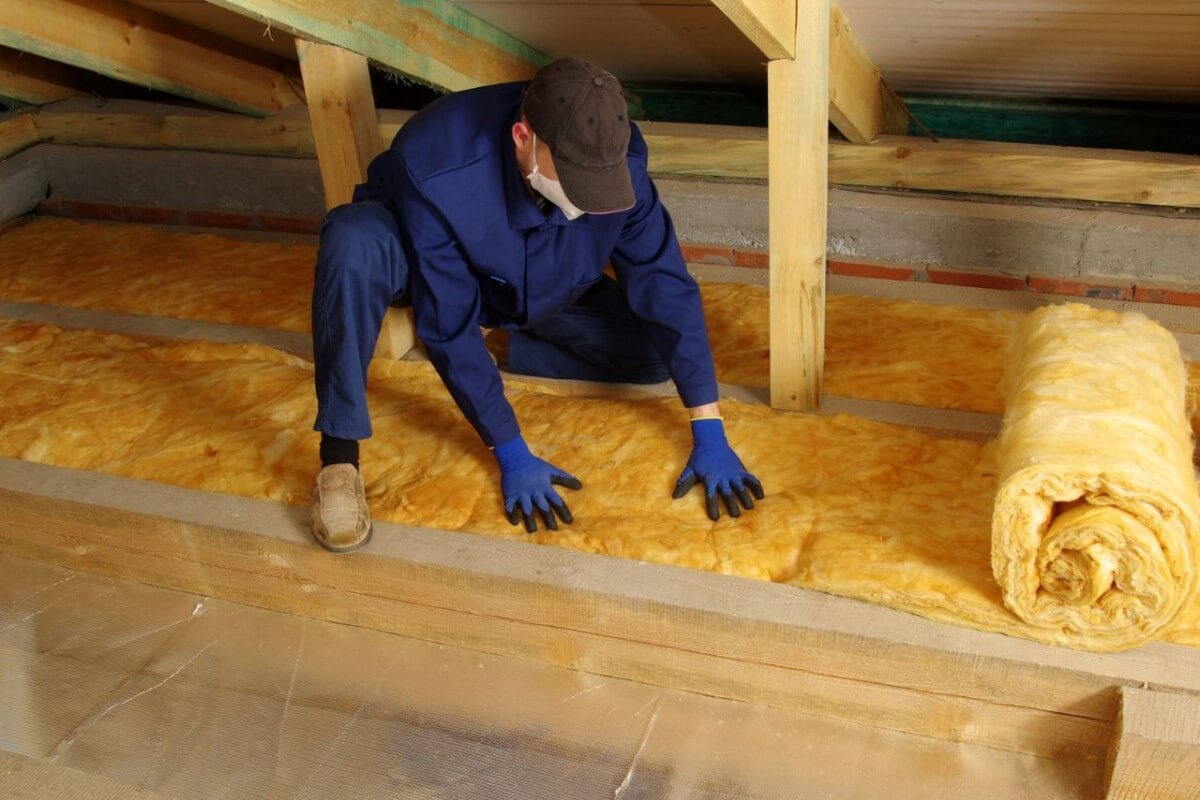According to research, about 25% of the heat is lost through the roof in homes without proper insulation. This means a significant amount of money spent on energy bills is being wasted. However, preventing this heat loss is quite easy, especially regarding the roof.
Installing insulation in the attic is inexpensive and straightforward. As long as there is access to the attic, it shouldn’t take more than a couple of days for a professional installer or someone skilled in do-it-yourself projects to complete the task. Read on to learn more!
Why opt for Loft Insulation?
From being one of the most prominent features in the eyes of many buyers to being a requirement to comply with the regulations, loft insulation shows its importance in many ways. The following are the motivations why you should opt for loft insulation.
- To save energy and money on your heating bills. It keeps your home warm in the winter and cools in the summer, leading to noteworthy savings on your energy bills.
- To improve the comfort of your home. Loft insulation can help reduce draughts and drafts, making your home feel warmer and more comfortable.
- To reduce your carbon footprint. It reduces your home’s energy consumption, which can help to reduce your carbon footprint.
- To increase the value of your home. As many buyers see loft insulation as a desirable feature, it can help increase your home’s value when you come to sell it.
- To meet building regulations. Homes that were built before 2002 likely do not have enough loft insulation. They require more insulation to comply with the regulations.
How Much Loft Insulation Do I Need?
The current recommended depth of loft insulation in the UK is 270mm (10.6 inches) for mineral and glass wool insulation. This is the minimum depth required to meet current building regulations; you should use it as a starting point for the insulation.
However, if you live in a cold climate, you may need to install more insulation to achieve the desired level of energy efficiency. Suppose you want to opt for more insulations. In such a case, the amount of loft insulation you need will depend on the following factors.
- The age of your home
- The type of insulation you are using
- The climate in your area
How to Know Loft Insulation Is Needed?
Before preparing yourself for loft insulation, it’s essential to know whether your loft needs to be insulated. Well, the following is the procedure or the indication to get the answer to your concern.
- Lesser Thickness of Existing Insulation. If you can access your loft, check the thickness of the existing insulation. You need to insulate your loft section if it’s less than 270mm (mineral or glass wool).
- You’re Getting High Energy Bills. Expensive energy bills and a consistently cold house can be signs of inadequate insulation. If you continuously get higher energy bills, loft insulation might be an issue.
- Bird Activity on Roof in Cold. Birds tend to gather on warm roofs to enjoy the heat, particularly in cold weather. If birds frequently occupy your roof on frosty mornings, it may indicate heat escaping your home.
- Uneven Snow Coverage on the Roof. After a heavy snowfall, compare your roof to your neighbour’s roof. If your neighbour’s roof has significant snow while yours is snow-free, it suggests the need for insulation.
How to Insulate Your Pitched Roofs? [2 Ways]
Suppose you have a pitched roof in your home, and it lacks an adequate amount of insulation. In such a case, you have two options, cold and warm loft insulation, to go for insulation.
Cold Loft Insulation
Cold loft insulation is the most common type of loft insulation. It involves installing insulation between the joists of your loft floor. This type of insulation helps prevent heat from escaping your home via the roof.
Warm Loft Insulation
Warm loft insulation, a recent development, involves installing insulation directly under the roof rafters. It helps to keep the roof space warm and make your loft a suitable living space.
Warm vs Cold Loft Insulation
See the following comparison table between cold loft and warm loft insulation.
| Feature | Cold Roof Insulation | Warm Roof Insulation |
| Location | Between the joists of the loft floor | Under the roof rafters, tiles, or slates |
| Purpose | Prevents heat from escaping from the home | Keeps the roof space warm |
| Benefits | Relatively inexpensive | Can make the loft space warmer and more comfortable |
| Drawbacks | Can make the loft space less accessible | More expensive than cold loft insulation |
Note: The right insulation type depends on your individual needs and circumstances. If you want to preserve energy and money, cold loft insulation is a good option. Warm loft insulation may be better if you utilise your loft as a living space.
What Is the Solution for Homes with Flat Roofs?
Unlike pitched roofs that can be insulated using either warm or cold roof insulation methods, flat roofs require a different type of approach. Flat roofs are insulated from the top; it is recommended to prevent heat losses from the roof.
This prevents moisture from accumulating within the roof. To do this, you will require an expert installer to place solid insulation on top of the roof’s surface or the wooden joists if it’s damaged. Then, the final layer of waterproofing is added.

What Are Common Insulation Materials?
Sheep’s Wool
Sheep’s wool is a 100% natural insulation material made from the fleece of sheep. It is an excellent insulator and is relatively fire-resistant. Sheep’s wool is also breathable, which can help to regulate the humidity in your home. However, sheep’s wool can be more expensive than other insulation materials.
Mineral Wool
Mineral wool is a man-made insulation material created from melted rock or slag. It is a suitable insulator and is relatively fire-resistant. Mineral wool is also available in various forms, including batts, blankets, and loose fill. Mineral wool is a good choice for insulation in areas with a fire risk.
Spray Insulation
Spray insulation is an insulation that is used as a liquid and then extends to form a solid barrier. Spray insulation is a good insulator and can be used in various applications. However, spray insulation can be more expensive than other insulation materials.
Note: Although sheep’s wool, mineral wool, and spray insulation is most commonly used, there are also some other less-used but more-affordable types of insulation as well, including fibreglass, cellulose, foam, and polyester.
Sheep’s vs Mineral Wool vs Spray Insulation
| Feature | Sheep’s wool | Mineral wool | Spray insulation |
| Material | Natural | Man-made | Man-made |
| Cost | More expensive | Less expensive | More expensive |
| Fire resistance | Good | Good | Good |
| Breathability | Good | Good | Not breathable |
| Forms | Batts, blankets, loose fill | Batts, blankets, loose fill, spray | Spray |
| Applications | Attics, walls, floors | Attics, walls, floors, pipes, ducts | Attics, walls, floors, pipes, ducts |
How Much Does Loft Insulation Cost?
Remember, the actual price for loft insulation may vary depending on the specific brand and manufacturer of the insulation material. Here are the different insulation types’ costs per square metre installation;
| Insulation material | Cost per square metre |
| Fibreglass insulation | £4 to £6 |
| Cellulose insulation | £4 to £7 |
| Mineral wool insulation | £10 to £13 |
| Sheep’s wool insulation | £18 to £25 |
| Spray foam insulation | £27 to £30 |
 01322 470 300
01322 470 300



![Loft Insulation Guide – [Types, Costs, Materials & More]](https://albionra.co.uk/blog/wp-content/uploads/2023/07/Loft-Insulation.jpg)